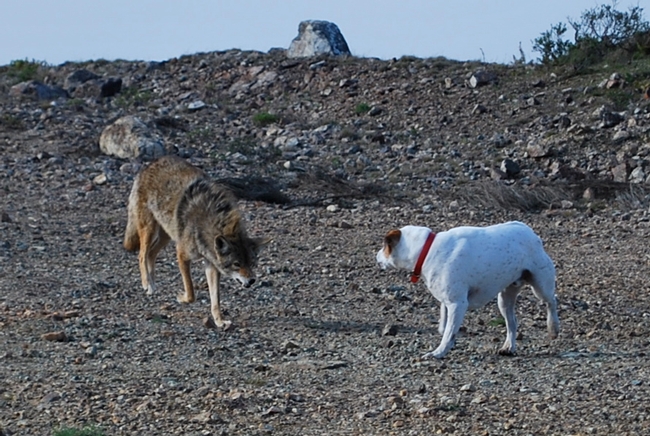Coyotes are getting comfortable in Southern California
In another sign of growing frustration with wildlife in Southern California residential areas, a coyote was shot and killed in a Silver Lake neighborhood by an unknown suspect in June, reported Nina Agrawal in the Los Angeles Times. Residents are taking to social media to commiserate about increasingly bold coyotes, and actions taken to control them.
"It's very disconcerting. Are they coyote vigilantes or something?” the Times quoted one resident.
In a report presented to the L.A. City Council, the Department of Animal Services said its agency, the California Department of Fish and Wildlife and National Park Service had reached a consensus that the coyote population has not grown. The statewide population is between 250,000 and 750,000.
“They're not coming from anywhere, they're just here,” said Niamh Quinn, UC Cooperative Extension vertebrate pest management advisor who specializes in managing human-wildlife conflict. “They're now established in urban communities and they're reproducing successfully.”
Some Southern Californians believe the coyotes move to urban areas because of food and water shortages in the nearby hills, but Quinn disagrees.
“The coyote is going to try to expend the least amount of energy to get the maximum amount of food,” Quinn said. “Why would you stay in a more rural area where you have to go catch a rabbit when you can stick your head in a garbage can and get the same nourishment?”


